The Defence Line of Amsterdam was built to protect Amsterdam, the capital city of the Netherlands. The city was protected by a network of forts and defensive waterworks. The Fort along the Pampus is one of the fortresses of the Defence Line of Amsterdam. The Fort along the Pampus was constructed on a man made island in the former Zuiderzee, now Lake IJsselmeer. The fortifications were built in 1883-1920. During WWI, 200 soldiers were stationed at the fort. During WWII, the Germans removed the steel objects including the guns, it was transported to the Ruhr region and melted down for munitions. After 1933, the fort was not used for military purpose anymore. Today, it is a monument and can be visited. The Fort along the Pampus is the most visited fort of the Defence Line of Amsterdam. The fort can be reached by a ferry from the fortified town of Muiden, also a key link in the Defence Line of Amsterdam. Muiden is situated about 17 km southeast of Amsterdam. Five forts of the Defence Line of Amsterdam are located in the Beemster Polder. The Defence Line of Amsterdam, including Fort along the Pampus, was declared a UNESCO World Heritage in 1996. In 2021, the New Dutch Water Line was declared a UNESCO World Heritage, this defense line, together with the Defence Line of Amsterdam, forms the UNESCO World Heritage: Dutch Water Defence Lines.
www.werelderfgoedfotos.nl © Copyright World Heritage Photos
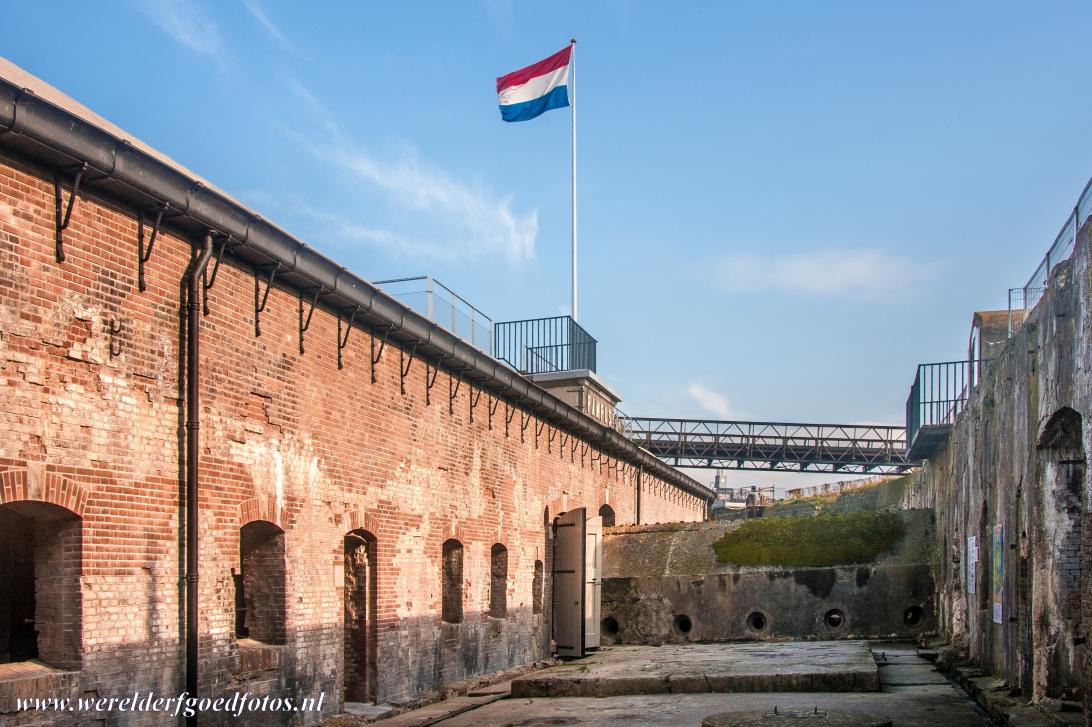
The historic Fort along the Pampus is one of the most important fortresses of the Defence Line of Amsterdam. Amsterdam, the capital city of the Netherlands, was protected by the Defence Line of Almsterdam, an enormous network of fortresses, batteries, casemates and waterworks such as a large system of canals, sluices, dikes and inundations, temporary flooding the polders.

The historic Fort along the Pampus is one of the most important fortresses of the Defence Line of Amsterdam. Amsterdam, the capital city of the Netherlands, was protected by the Defence Line of Almsterdam, an enormous network of fortresses, batteries, casemates and waterworks such as a large system of canals, sluices, dikes and inundations, temporary flooding the polders.
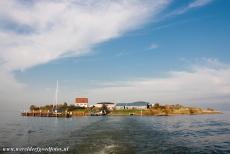
The Fort along the Pampus is part of the Defence Line of Amsterdam. The fortress was built in the period 1887-1895 on a man made island in the former Zuiderzee, now Lake IJsselmeer. The fortress was constructed on the Pampus sandbank, 4000 piles and 45000 m³ of sand were used to build up the sandbank. The Fort along the Pampus itself was built of brick and concrete.
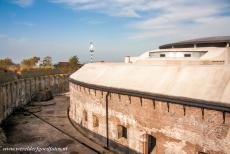
Defence Line of Amsterdam: The two turrets of the Fort along the Pampus are overlooking Lake IJsselmeer. The turrets are a reconstruction made of wood and polyester. Once, two guns were housed in the gun turrets of the fort. In WWII, the Germans occupiers removed the steel objects from the fort including the guns and turrets, the steel was melted down for munitions.
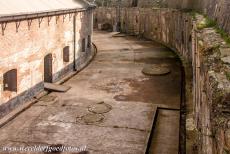
Defence Line of Amsterdam: The Fort along the Pampus is an oval shaped concrete building, the dry moat between the inner fort and the outer fort is eight metres deep. The Fort along Pampus is the most visited fort of the Defence Line of Amsterdam. The Defence Line of Amsterdam was inscribed on the UNESCO World Heritage List in 1996.
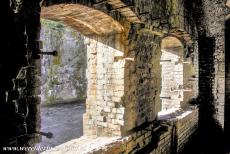
Defence Line of Amsterdam: The Fort along the Pampus, the dry moat seen from the inner fort. Together with the coastal battery on the lighthouse island close to Durgerdam and the coastal battery near Diemerdam, the Fort along the Pampus was constructed to protect the entrance to the harbour of Amsterdam and the IJ, the waterfront of Amsterdam.

The Fort along the Pampus was built with concrete reinforced with basalt. During WWII, the fort was used for target practice for German dive bombers. Nowadays, the Fort along the Pampus is a monument and open to the public. The Fort along the Pampus is part of the Defence Line of Amsterdam. The Defence Line of Amsterdam was completed in 1920.
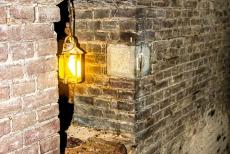
Fort along the Pampus: The gunpowder storeroom is situated along a transport corridor inside the inner fort. The transport corridor is leading to the two gun turrets. The inner fort contained also rooms such as the kitchen and soldier's quarters. The Fort along the Pampus is situated in Lake IJsselmeer, about 2.5 km north of the harbour of the fortified town of Muiden.
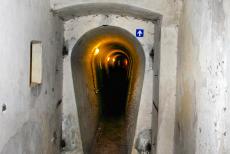
Fort along the Pampus: A defensive corridor in the outer fort, the corridor was built in the shape of a keyhole, so that soldiers with a backpack could easily walk through the corridor. The outer fort housed a prison, a forge and several storage rooms. The Fort along Pampus is one of the 45 forts of the Defence Line of Amsterdam.
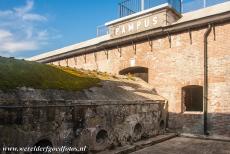
Defence Line of Amsterdam: One of the bombproof corridors of the Fort along the Pampus. The outer fort and the inner fort were connected by two bombproof corridors. The Defence Line of Amsterdam has never seen combat service, during the construction of the fort, the invention of the aeroplane and long range weapons rendered the defence line obsolete.
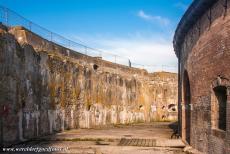
Defence Line of Amsterdam: The dry moat between the outer and inner fort of the Fort along the Pampus. The Dutch army was fully mobilized during WWI, 200 soldiers were quartered on the Fort Island Pampus, but the Netherlands remained neutral and no shot was fired from the fort. After 1933, the fort was not used for military purpose anymore.
